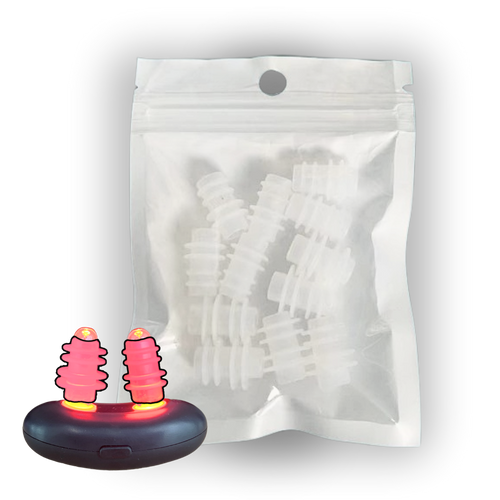How To Use NoMore® - Nasal Device
Here is a Quick Starting Guide on How To Use Our Amazing and Popular Device in 5 Easy Steps:
Step 1 - Take the NoMore Nasal Device out
Take out NoMore Nasal Device and choose nasal pads of your size.
Step 2 - Charge the NoMore Nasal Device
Connect the USB cable and charge it fully (Light automatically turns off when fully charged, allows 45 uses).
Step 3 - Turn on the NoMore Nasal Device
You just need to press the device's power button, choose the mode you prefer and it will be ready for the treatment. (3 Modes: Strong, Gentle, Pulse)
Step 4 - Let's start!
Insert the device into your nose, ensuring it goes in approximately 1-2 cm. You just need to relax and hold it for 10 minutes.
Step 5 - Cleaning & Maintenance
1. Wipe the outer surface of the product with a soft, damp cloth or medical cotton ball. 2. To maintain a hygienic state, do not share the product with others. 3. Store the product at room temperature (not exceeding 40°C) to avoid prolonged exposure and high temperatures. 4. Do not submerge or wet the product to avoid damage caused by water ingress.
Precautions/Warnings.
1. Read the instruction manual before use to avoid misuse, adverse consequences or damage to the instrument.
2. After charging is completed, disconnect the charger from the product.
3. Use the product indoors and avoid using it in a dark environment.
Do not engage in violent activities during use and stay away from microwave ovens, induction stoves, X-ray machines and other strong magnetic equipment.
4. Do not look directly at the light source for a long time to avoid retinal damage.
5. Store the product out of the reach of children.
Children should use it under parental supervision to avoid shock and injury to nasal cavities.
6. Patients with eye problems should use it with caution.
If they experience itchy eyes, foreign body sensation, red eyes and tearing, they should discontinue use.
1. Patients with light-sensitive diseases
2. People with an abnormal nasal structure (with deviation of the nasal septum)
3. People with other bacterial or viral infections in the nasal cavity
or large polyps)
4. People with dry nasal bleeding, eye diseases, dizziness, headaches and other diseases (such as nasopharyngeal cancer).



